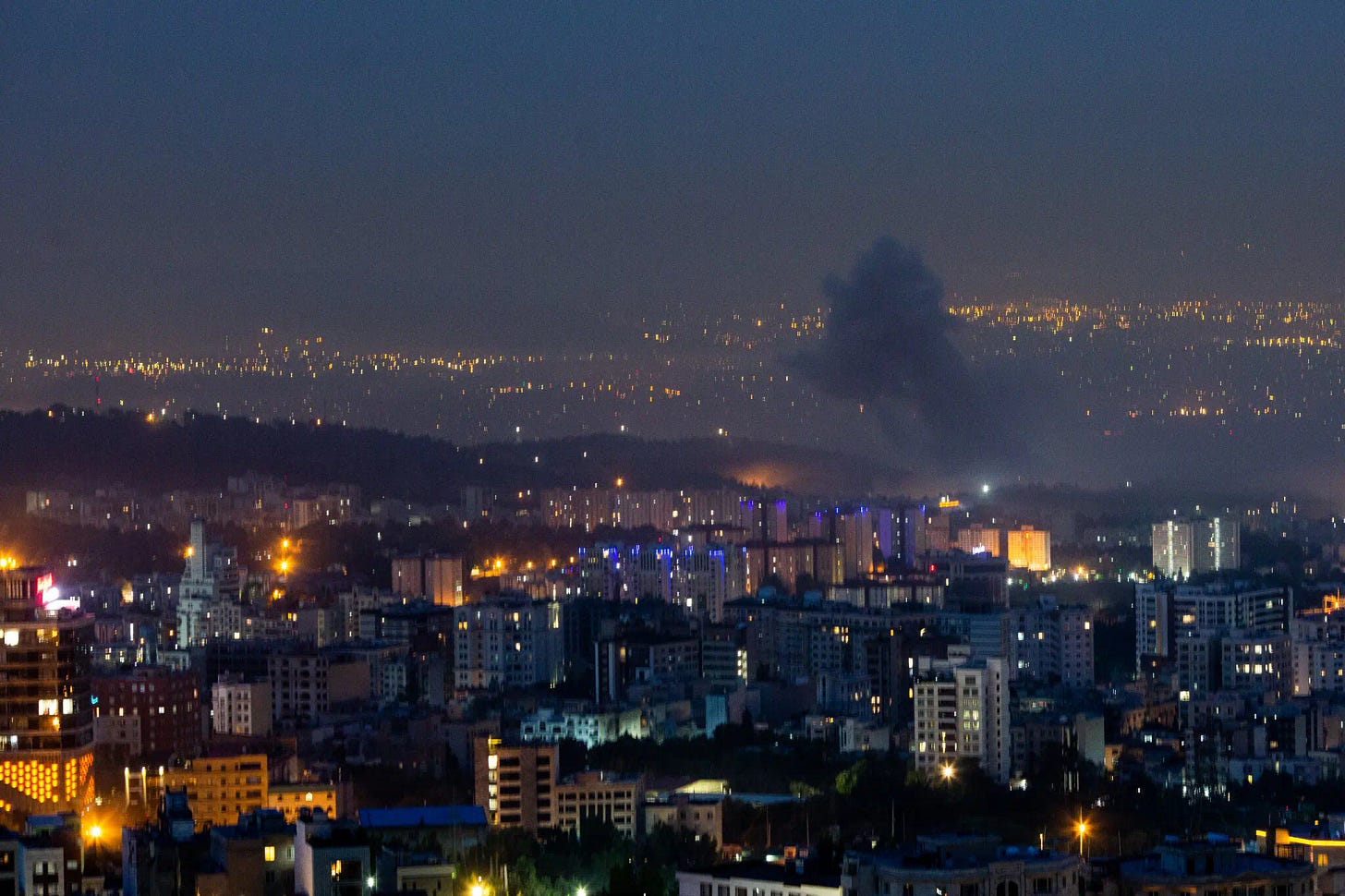Today's News: Israel Launches Coordinated Strikes Against Iran's Nuclear and Military Leadership
While damage was inflicted on aboveground facilities and key personnel were killed, Iran's core uranium stockpiles and fortified sites such as Isfahan and Fordow remained intact.
Photo: Arash Khamooshi for The New York Times
Overview
Date: June 13–14, 2025
Topic: Israel Launches Coordinated Strikes Against Iran's Nuclear and Military Leadership
Summary: In a sweeping and multi-pronged military campaign dubbed “Rising Lion,” Israel launched large-scale strikes against Iran’s nuclear infrastructure and senior leadership. The operation involved hundreds of aircraft and was preceded by covert Mossad preparations inside Iran. While damage was inflicted on aboveground facilities and key personnel were killed, Iran's core uranium stockpiles and fortified sites such as Isfahan and Fordow remained intact. The attacks provoked immediate Iranian retaliation with missile and drone strikes, while the U.S. distanced itself diplomatically. Experts and global actors voiced concerns over potential regional escalation, as both Israel and Iran signaled readiness for continued hostilities.
Sources
CNN – How Israel’s campaign to wipe out Iran’s nuclear program unfolded
NBC News – How Israel's Iran strikes might open 'Pandora's box' for the region — and the U.S.
The Washington Post – How Mossad covertly prepared Israel’s attack from deep inside Iran
Key Points
Israel’s operation targeted nuclear sites (Natanz), air defenses, missile stockpiles, and high-ranking military officials.
The strikes were part of a broader decapitation strategy aimed at crippling Iran’s command structure, echoing Israel’s campaigns against Hezbollah and Hamas.
Israel avoided hitting Iran’s enriched uranium stockpile at Isfahan, potentially to prevent a radiological incident or preserve leverage for future negotiations.
Mossad coordinated in-country operations, including pre-positioning weapon caches, launching internal strikes, and gathering intelligence on targets.
Iran responded with ballistic missile and drone attacks on Israel; Israeli air defenses intercepted many of them.
The U.S. publicly distanced itself from the operation, though Iran and some analysts suspect coordination.
Unique Highlights
The New York Times emphasized Israel’s deliberate avoidance of striking Isfahan’s uranium fuel stockpile and raised the specter of radiological contamination had the site been bombed.
CNN provided a minute-by-minute breakdown using satellite imagery and geolocated videos, noting Israel’s strikes hit residential neighborhoods and nuclear scientists in Tehran.
The Washington Post detailed Mossad’s covert groundwork inside Iran, including hidden weapons caches, explosive drones, and pre-invasion communications with Iranian officials.
Fox News reported on Iran’s rapid replacement of slain officials and the invocation of UN Charter articles to justify potential retaliation.
NBC News warned of the potential for regional escalation, referencing fears that Supreme Leader Khamenei might be targeted and citing Iran's missile stockpile size (estimated 3,000+).
The Wall Street Journal noted Israel’s plan for multi-week strikes aimed at forcing Iran into negotiations or crippling its nuclear ambitions beyond repair.
Contrasting Details
Radiological Damage:
The New York Times reported possible contamination at Natanz, but minimal environmental danger.
CNN cited Iran’s atomic agency saying the enrichment facility had “no serious damage.”
The Wall Street Journal did not discuss radiation but emphasized the strategic impact of disabling infrastructure.
Leadership Casualties:
CNN reported that six named senior Iranian figures were killed.
Fox News listed only two (Salami and Bagheri), but highlighted replacements.
The Washington Post offered names and operational details for how Mossad targeted them.
The Wall Street Journal confirmed multiple leaders killed, but also noted ongoing Israeli warnings to their successors.
U.S. Role:
NBC News suggested skepticism about U.S. non-involvement, citing analysts who believe Israel acted with tacit U.S. approval.
Fox News echoed Iran’s claim that the strikes required U.S. coordination.
CNN and The New York Times presented official U.S. denials without editorializing.
Strategic Intent:
The New York Times portrayed Israel as holding back to maintain leverage.
The Wall Street Journal argued the operation seeks regime destabilization, not just nuclear disruption.
NBC News framed the campaign as potentially dragging the U.S. into broader conflict.
The Newsie Project uses AI to summarize, compare, and contrast the reporting of the major US and world online news sources.
This is an evolving project. Tools, approaches, and output formats will change over time. The Newsie Project does not attempt to provide a definitive capsule of any news story. While the incidence of errors in these summaries is low, and I attempt to spot-check details, AI tools can hallucinate. Please click through and read the articles for details (some may be paywalled).


